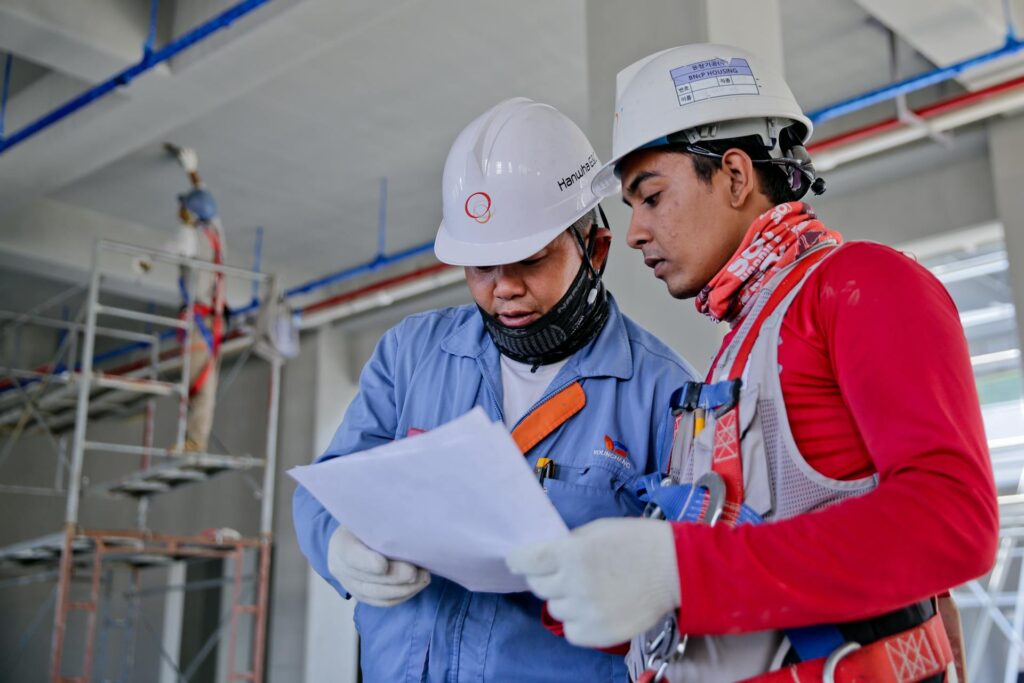How Smart Sensors Are Transforming Construction Site Safety
April 9, 2025

Smart sensors are a transformative technology for construction site safety. They provide an easy-to-apply method to monitor and react to safety risks before people suffer injuries. For construction industry professionals, including site managers, project managers, and construction teams, adopting these technologies can enhance existing safety protocols while minimizing future risks.
What Are Smart Sensors?
Smart sensors, such as internet of things (IoT) sensors, are internet-connected devices placed in key areas to monitor conditions. When the sensor’s target reacts, it communicates directly to the app or reporting tool about the change, enabling changes to be made as needed.
Smart sensors in construction can effectively monitor safety risks, send alerts, and enable action before detrimental outcomes occur. Some of the most advanced solutions use AI in construction safety to monitor areas and make decisions about risk mitigation before negative outcomes occur. Manufacturers create these devices for a vast number of applications for the construction industry's specific needs.
How Smart Sensors Work
There are a vast number of smart sensors applicable to the construction industry. The most common forms include IoT, which reports conditions on the construction site to an app or other hub, and AI, which analyzes risks within an environment and then offers solutions or risk mitigation strategies.
Consider a few examples of how these smart sensor types provide for workplace accident prevention:
- Smart safety vests: Contractors on a job site wear smart safety vests that increase visibility in low-light environments or monitor the wearers' vital signs for any changes that could indicate exposure or risk.
- Hard hats: Smart sensor hard hats can monitor worker brainwaves to determine if an employee is tired (with the application of AI), or they may provide warning alerts in situations where a construction site professional is entering an area with exposure risk.
- On-site sensors: These can mitigate workplace accidents by monitoring conditions for specific risk factors, such as air quality, noise levels, or temperatures. When changes in pressure occur, these devices warn teams, minimizing the risk of workplace accidents or injuries.
- Drones: These are an effective type of AI-enabled solution that can provide high-resolution and 3D images that allow for improved decision-making in the field. This can improve surveying and inspections by not requiring employees to climb on ladders.
- Connected equipment: This includes construction machinery and provides real-time monitoring to a central location or management team, allowing for improved decision-making, better efficiency, and reduced safety risks due to breakdowns.
Depending on the risks of any specific construction site, IoT and AI in construction safety practices keep more people safe by avoiding predictable outcomes through early detection. The scope of potential protection is exceptional.
Benefits of Using Smart Sensors in Construction
Sensors in the construction industry contribute to workplace accident prevention, improved employee satisfaction, and lower liability costs.
The American Institute of Constructors notes that practical and ethical use of smart sensors can contribute to a safer workplace. Other key benefits construction companies may see from adopting these technologies include:
- Improved real-time monitoring of conditions: Ensuring conditions remain safe for teams even in remote areas helps construction site managers reduce unknown risks. Since these devices monitor over long distances, people do not have to be put in harm’s way.
- Faster response times: In situations where a hazard occurs, such as an employee falling or passing out, devices can detect that event immediately, enabling faster dispatch for critical care.
- Reduction in accidents: The use of wearable technology, according to the U.S. Government Accountability Office, could reduce workplace injuries when selected appropriately for the risks present on that job site.
- Reduce costs: Reduced workplace injuries often translate into fewer claims and, as a result, reduced insurance and liability costs. For companies, this can directly impact risks on the job.
- Reputational support: Employees want to work where it is safe, and with these added tools and their ethical use, it may be possible to mitigate some of the more common risks, making job sites and construction jobs safer.
Being Proactive About Workplace Accident Prevention Is Worth It
Data from the Centers for Disease Control and Prevention indicates that one in five fatal workplace accidents occur in the construction industry, with thousands more people suffering serious injuries. With the use of smart technology and AI in construction safety, reducing some of those risks may be possible while ensuring efficient construction operations.
At HireQuest Direct, safety is our primary focus. Construction site safety is a big part of what we do through our temporary staffing and on-demand labor solutions. Connect with our HireQuest National Accounts sales team today!







